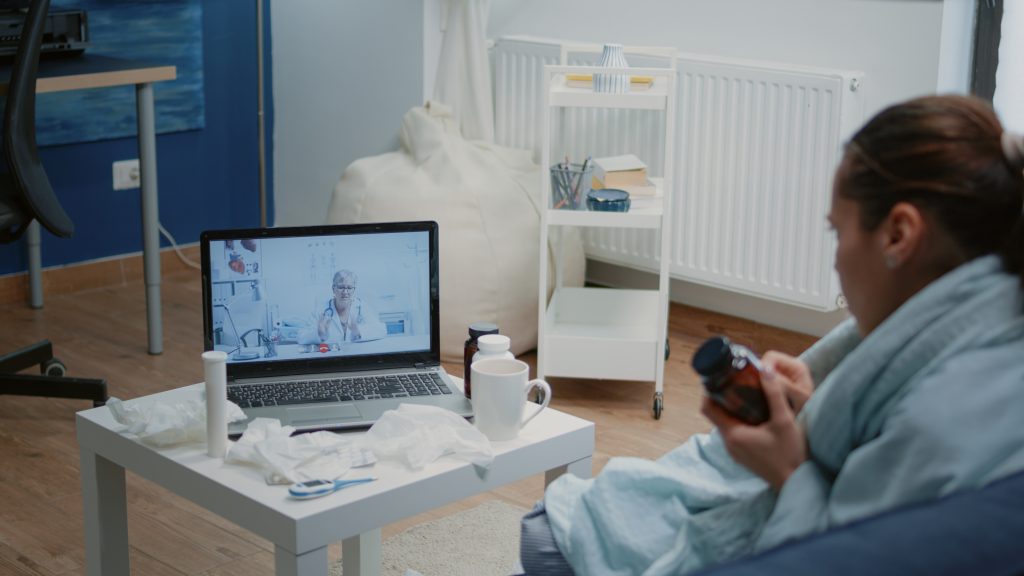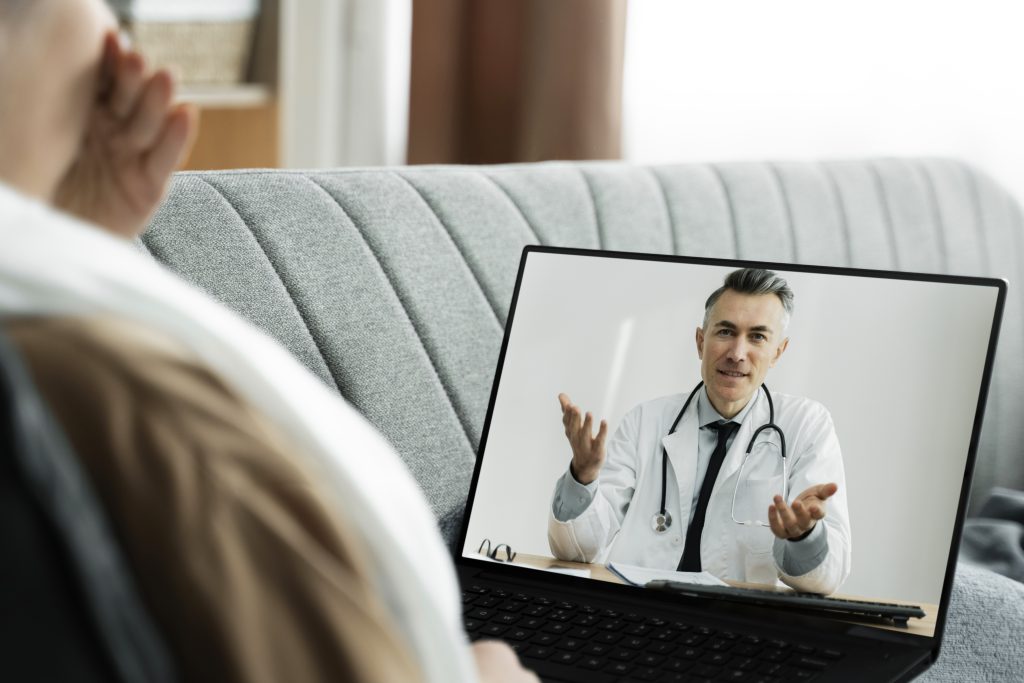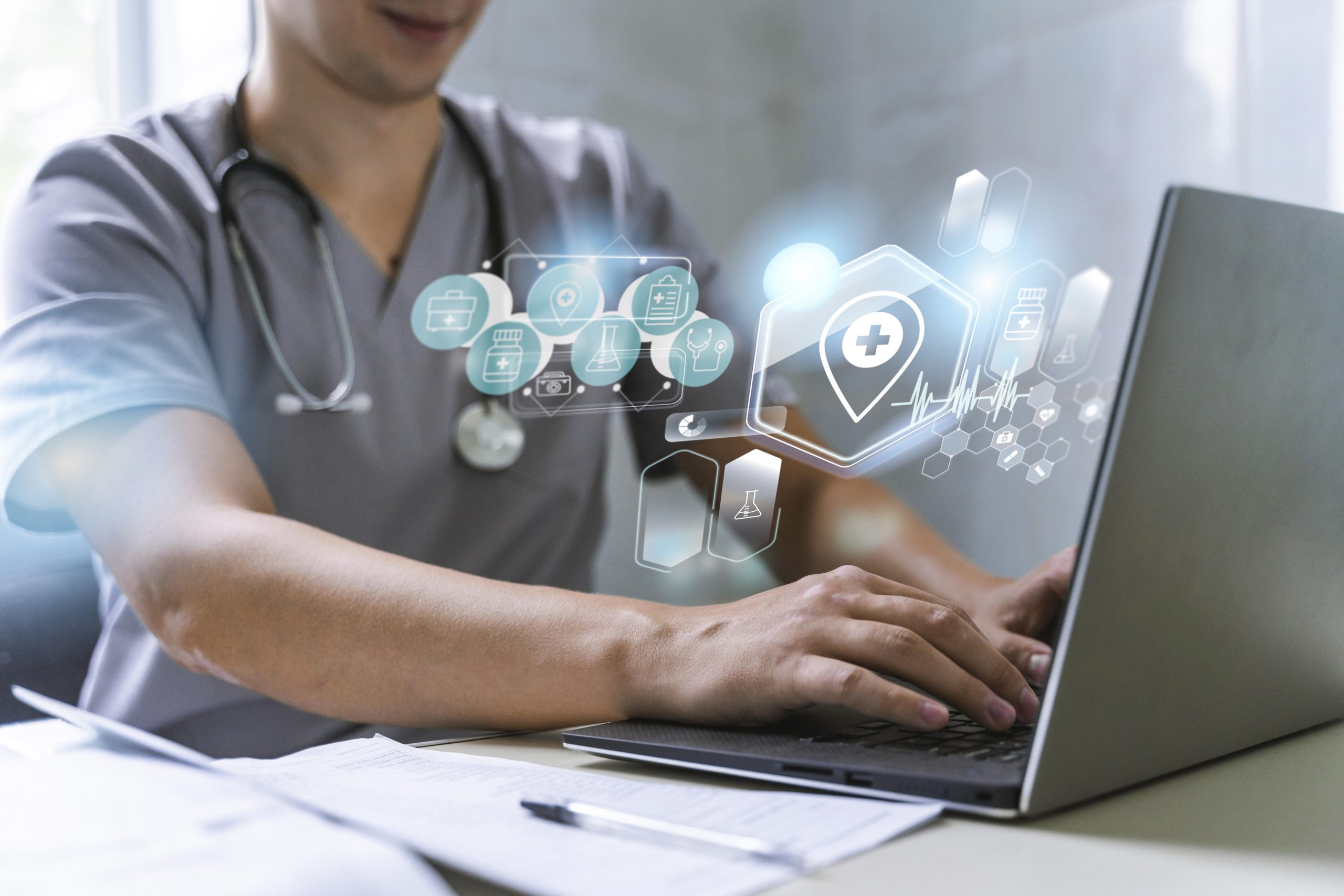Enter remote patient monitoring, a rapidly growing method of care that empowers patients and providers to work together more efficiently – no waiting room required.
In this article, we’ll explore what is remote patient monitoring, how it works, who benefits the most, and why it’s becoming a cornerstone of modern healthcare.
What Is Remote Patient Monitoring?
At its core, remote patient monitoring (RPM) is the use of connected devices and digital technology to track patients’ health metrics outside of traditional clinical settings. This can include measuring vital signs like blood pressure, heart rate, blood sugar, weight, and oxygen levels in real-time or near-real-time. The data collected is transmitted securely to healthcare providers, who can then assess the patient’s condition and intervene when necessary.
While RPM is a type of telehealth, it differs in that it focuses on continuous, real-time data collection rather than episodic care like a virtual doctor visit. For example, someone managing hypertension might use a connected blood pressure monitor that sends daily readings to their provider, allowing for quick adjustments to medications or lifestyle changes before a problem escalates.
Use cases for RPM span a wide range of specialties, from cardiology and endocrinology to geriatrics and post-operative care. It’s particularly effective in managing chronic diseases, helping reduce hospital readmissions, and enhancing the quality of life for patients at home.
How Does Remote Patient Monitoring Work?

The RPM process typically follows a few key steps:
- Patient Enrollment and Assessment: A provider identifies eligible patients (e.g., those with chronic conditions) and educates them on the benefits of RPM.
- Device Setup: Patients receive FDA-approved devices like blood pressure cuffs, pulse oximeters, smart scales, or glucose monitors. These devices connect to apps or cloud systems via Wi-Fi, Bluetooth, or cellular networks.
- Data Transmission: Health metrics are automatically sent to the provider’s secure dashboard, where they are monitored regularly.
- Review and Intervention: Providers assess the data, respond to abnormal readings with follow-ups or care adjustments, and document trends over time.
Most RPM programs use cloud platforms and HIPAA compliant telehealth portals to ensure privacy and security. These platforms often include features like alerts, trend graphs, and patient messaging tools to make care more interactive and proactive.
Benefits of Remote Patient Monitoring
RPM offers a wide range of advantages for both patients and providers:
Continuous Oversight
Patients with chronic conditions receive daily monitoring without needing frequent office visits.
Fewer Hospitalizations
RPM has been shown to reduce ER visits and readmissions, especially after surgery or acute illness.
Improved Medication Adherence
Regular tracking encourages patients to stick to their prescribed care plans.
Patient Empowerment
Having access to their own health data can motivate patients to make healthier choices.
Aging in Place
Seniors can stay in their homes longer while still being safely monitored by their healthcare team.
Challenges and Limitations of RPM
Like any technology, RPM is not without its hurdles:
- Connectivity and Tech Literacy: Not all patients have reliable internet or feel comfortable using digital devices.
- Alert Fatigue: Providers may be overwhelmed by non-critical alerts if the system isn’t calibrated properly.
- Insurance and Reimbursement: Coverage policies vary, and some providers struggle to navigate the complexities of billing.
- Security Concerns: Data privacy must be protected through encryption and adherence to health regulations.
- Device Accuracy: Inaccurate readings can lead to improper clinical decisions, so devices must be well-calibrated and FDA-cleared.
Who Can Benefit From Remote Patient Monitoring?
RPM is especially useful for:
Patients with Chronic Illnesses
Such as diabetes, COPD, or hypertension.
Recently Discharged Patients
Those who need follow-up care at home after a hospital stay.
Elderly or Mobility-Limited Individuals
RPM reduces the need for frequent travel to healthcare facilities.
Post-Operative Patients
Those recovering from surgery and needing wound care or vitals monitoring.
RPM can also be integrated with other services to support in person vs virtual therapy models, creating a hybrid care experience that blends the best of both worlds.
Key Technologies Used in RPM
The success of RPM depends heavily on the technology behind it. Some key tools include:
- Wearables: Smartwatches, biosensors, and patches that track vitals.
- Medical Devices: FDA-approved gadgets like pulse oximeters and glucometers.
- Mobile Apps: For patient engagement, reminders, and symptom tracking.
- Provider Dashboards: Where healthcare teams view trends and intervene as needed.
- Analytics and AI: Some systems use AI to flag high-risk patients or predict potential complications early.
These technologies often connect to broader digital health systems and integrate with HIPAA compliant telehealth platforms for secure communication and monitoring.
Is Remote Patient Monitoring Covered by Insurance?
The good news is that coverage for RPM is expanding rapidly:
Medicare and Medicaid
Both offer reimbursement for specific RPM services under certain CPT codes.
Private Insurance
Many commercial plans now include RPM in their telehealth offerings.
Billing and Coding
Providers must document patient consent and use accurate coding to qualify for reimbursement.
Compliance
Staying current with documentation, consent forms, and platform security is essential to maintain compliance.
For healthcare providers, working with telemedicine payment processors can simplify the billing process, ensure secure transactions, and improve cash flow.
How Providers Implement RPM Programs
Launching a successful RPM program requires a coordinated approach:
- Assessment and Planning: Determine which patient populations will benefit most.
- Staff Training: Educate clinical staff on device usage, data review, and follow-up workflows.
- Patient Onboarding: Provide clear instructions and support to ensure comfort with the technology.
- Vendor Partnerships: Choose reliable device manufacturers and RPM platforms.
- Secure Billing: Use trusted telemedicine payment processors for secure financial transactions.
- Ongoing Monitoring: Track program success using key performance indicators like reduced readmissions or improved patient satisfaction.
Remote Patient Monitoring vs Other Virtual Care Models
RPM is just one piece of the virtual care puzzle:
- Telehealth: Broad term for all virtual care, including video consults and phone calls.
- Telemedicine: Typically refers to physician-led virtual visits.
- Mobile Health (mHealth): Includes health apps and wellness tools.
- RPM: Focused on collecting and analyzing patient-generated health data over time.
RPM shines in preventive care by helping catch issues before they become emergencies. It also complements in-person checkups by keeping providers informed in between visits.
Regulatory and Privacy Considerations
Remote patient monitoring (RPM) must adhere to strict regulatory guidelines to ensure patient safety and data privacy. All patient information must be encrypted and securely stored in compliance with HIPAA regulations.
Additionally, any devices used in RPM programs must receive FDA clearance to confirm they are safe and effective for clinical use. Patients must also provide informed consent, fully understanding what data is being collected, how it will be used, and who will have access to it. RPM vendors – including device manufacturers and technology platforms – are responsible for maintaining high standards of reliability and data security.
Ultimately, transparency and trust are essential, as patients need to feel confident that their personal health information is protected at every stage.
The Future of Remote Patient Monitoring

Looking ahead, RPM is only going to grow.
- AI-Driven Care: Predictive algorithms will make care even more proactive.
- Behavioral Health Monitoring: RPM tools are expanding into mental health and stress management.
- Global Expansion: As internet access increases, RPM will reach rural and underserved populations worldwide.
- Digital Health Integration: RPM will become part of a broader ecosystem including EHRs, patient portals, and wellness apps.
The future of healthcare is more connected, personalized, and home-based and remote patient monitoring in healthcare is right at the center of that shift.
Frequently Asked Questions (FAQs)
What is remote patient monitoring in healthcare?
It’s a technology-driven process that collects and transmits patient health data from outside the clinic to care teams.
Is remote patient monitoring the same as telemedicine?
No, RPM focuses on data collection and continuous monitoring, while telemedicine involves live consultations and treatment discussions.
What conditions are commonly monitored with RPM?
Diabetes, hypertension, heart failure, COPD, and post-surgical recovery are common examples.
Do I need a prescription for RPM services?
In many cases, yes. A physician must order RPM and enroll the patient for eligibility and reimbursement.
What kind of devices are used for remote monitoring?
Blood pressure monitors, glucose meters, weight scales, ECG patches, and wearable sensors are widely used.
References
Centers for Medicare & Medicaid Services. (2021). Remote patient monitoring services. https://www.cms.gov/newsroom/fact-sheets/medicare-telemedicine-health-care-provider-fact-sheet
American Medical Association. (2022). Digital health implementation playbook: Remote patient monitoring. https://www.ama-assn.org/delivering-care/digital-health/ama-digital-health-implementation-playbook
U.S. Food and Drug Administration. (2020). Policy for device software functions and mobile medical applications. https://www.fda.gov/regulatory-information/search-fda-guidance-documents/policy-device-software-functions-and-mobile-medical-applications

Leave a Reply